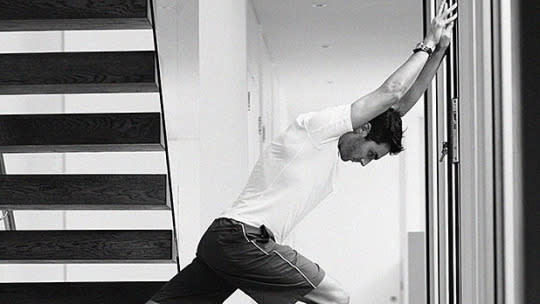Should You Stretch Before Working Out?

(Photo Courtesy of Michael Blann / Getty Images)
Chances are your childhood coaches and gym teachers encouraged — or even required — you to stretch before any game, practice, or class. It was long assumed that taking five or 10 minutes to stretch out your hamstrings, quads, lower back, and other key muscles would “warm them up,” thereby protecting you from injury and even boosting your athletic performance.
But then a rash of studies in the late ‘90s and early 2000s ground this custom to a halt. The evidence showed that, rather than improve strength, speed, power, and reaction time, static stretching actually hindered performance and made athletes more prone to muscle sprains and strains. When two separate groups of researchers reviewed this suite of studies in 2011 and 2012, respectively, they confirmed that static stretching indeed decreases athletic performance by 5 to 7.5 percent.
Related: 17 Stretches Everyone Should Know
But now some of those same experts say we shouldn’t be so quick to cast off stretching. David Behm, a human kinetics professor at Memorial University of Newfoundland, led a new in-depth review of the existing data, just published in the journal Applied Physiology, Nutrition, and Metabolism. This time, the researchers took a much closer look at the exact warm-up routines and the types of athletes analyzed in past studies.
Behm’s team found that, yes, static stretching can decrease performance somewhat — but only when you hold certain poses for one minute or more, and only when that’s your only form of warm-up. In reality, though, most athletes will stay in a stretch for just 30 seconds or so before moving on to the next. They’ll also likely do some light jogging or sport-specific movements to prep their body for action. The meta-analysis revealed that when athletes did a more comprehensive pre-sport routine, including short static stretches and dynamic stretching (moving your muscles like you would during your sport), the performance losses were actually small or nonexistent. On top of that, this more complete type of warm-up proved to offer significant protection against injury.
Related: 8 Exercises for Better Sex
So what does this mean for you? Behm says it depends on what types of activities you do, how old you are, and whether you’re gunning for a gold medal or just exercising or playing a sport for fun and fitness. He says our muscles tend to get tighter as we age, making it easier to get hurt during certain activities, and different sports and fitness levels command different preparation.
“You have to consider the cost-to-benefit ratio of stretching,” Behm explains. “Let’s assume static stretching does hinder performance 5 percent. If you’re Usain Bolt, and suddenly you run 5 percent slower, you’re going to finish in close to last place. But if you’re a 40-year-old out golfing with your buddies and you can normally hit the ball 200 yards — a 5 percent decrease would mean you’ll now hit 190 yards, which is not a huge deal. Plus, stretching might help spare you from injury.”
Related: The Worst Sports Injuries and How to Avoid Them
Behm believes stretching is smart before playing squash, basketball, hockey, and other sports that require a lot of stop-and-start and engage many different muscles. If you’re a runner or cyclist, however, it may not be necessary. “Oftentimes, runners and bikers will start off slow anyway, which offers a sufficient warm-up,” he says. “Then if they want to improve strength, they’ll save that work for another day, rather than doing a series of stretches or squats before starting their run or ride.”
If you are going to stretch before exercise, there’s a proper way to do it, says Behm. The first thing you should do is jog around or just get your body moving for about five minutes to warm it up. Next, do some static stretching, but only for about five minutes. “Spend no more than a minute on each major muscle group, such as your calves, quads, hamstrings, groin, and lower back,” Behm says. “Do three stretches per group, 20 seconds each. This is where research shows you can help prevent injury.” Next, do something sport-specific such as tossing the ball around or kicking your legs back and forth and side to side.
Related: 30 Workouts that Take 10 Minutes (or Less)
Behm also suggests stretching after a workout in order to minimize injury risk for next time. “Your muscles should be fairly warm so don’t be too vigorous with your stretching, or you could hurt yourself,” he says. “Do this after every type of workout. I can’t think of any athletic activity where post-exercise stretching won’t benefit you."
By Melaina Juntti
More from Men’s Journal:
The Only 4 Stretches You Need for Lifting
